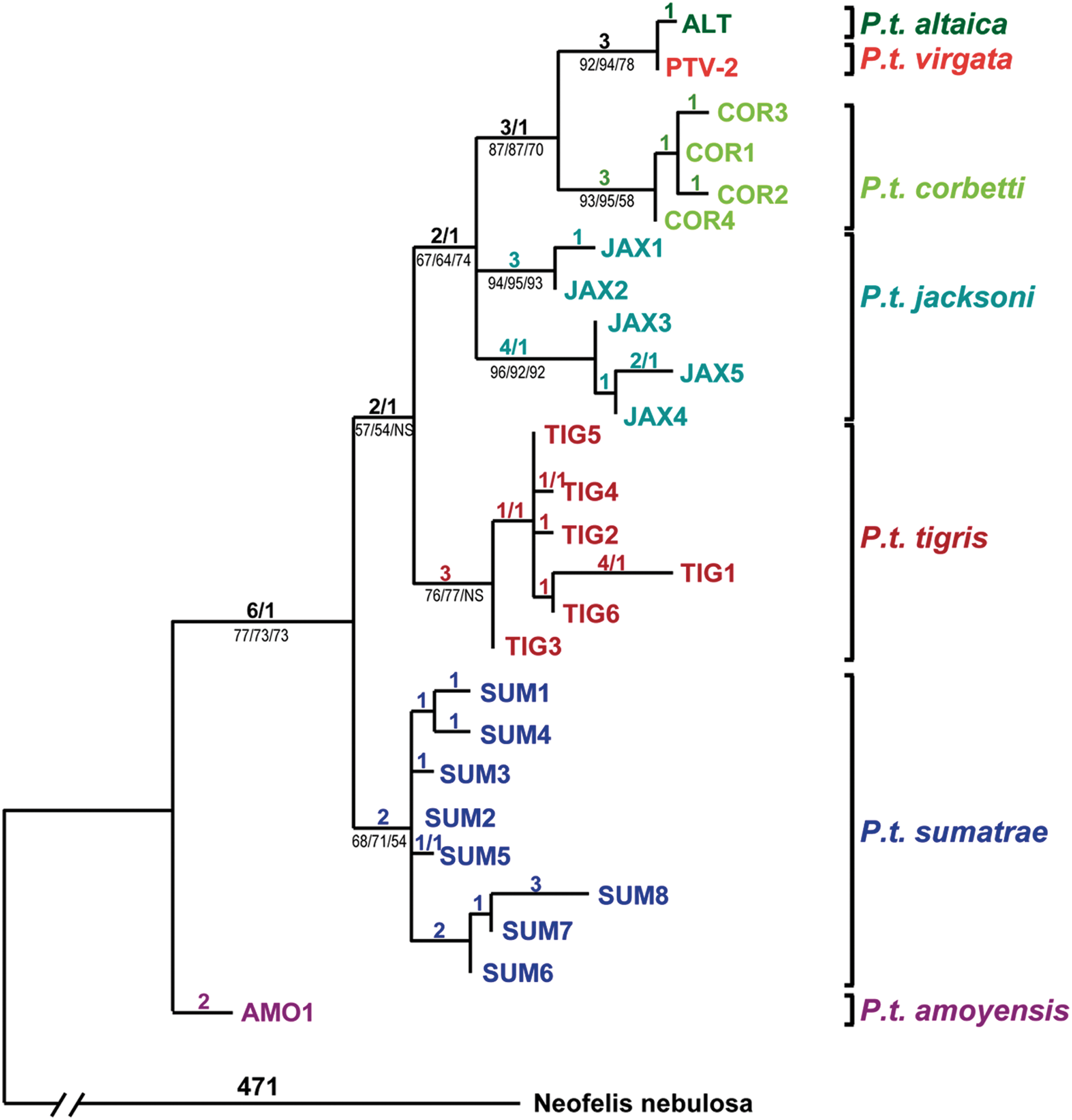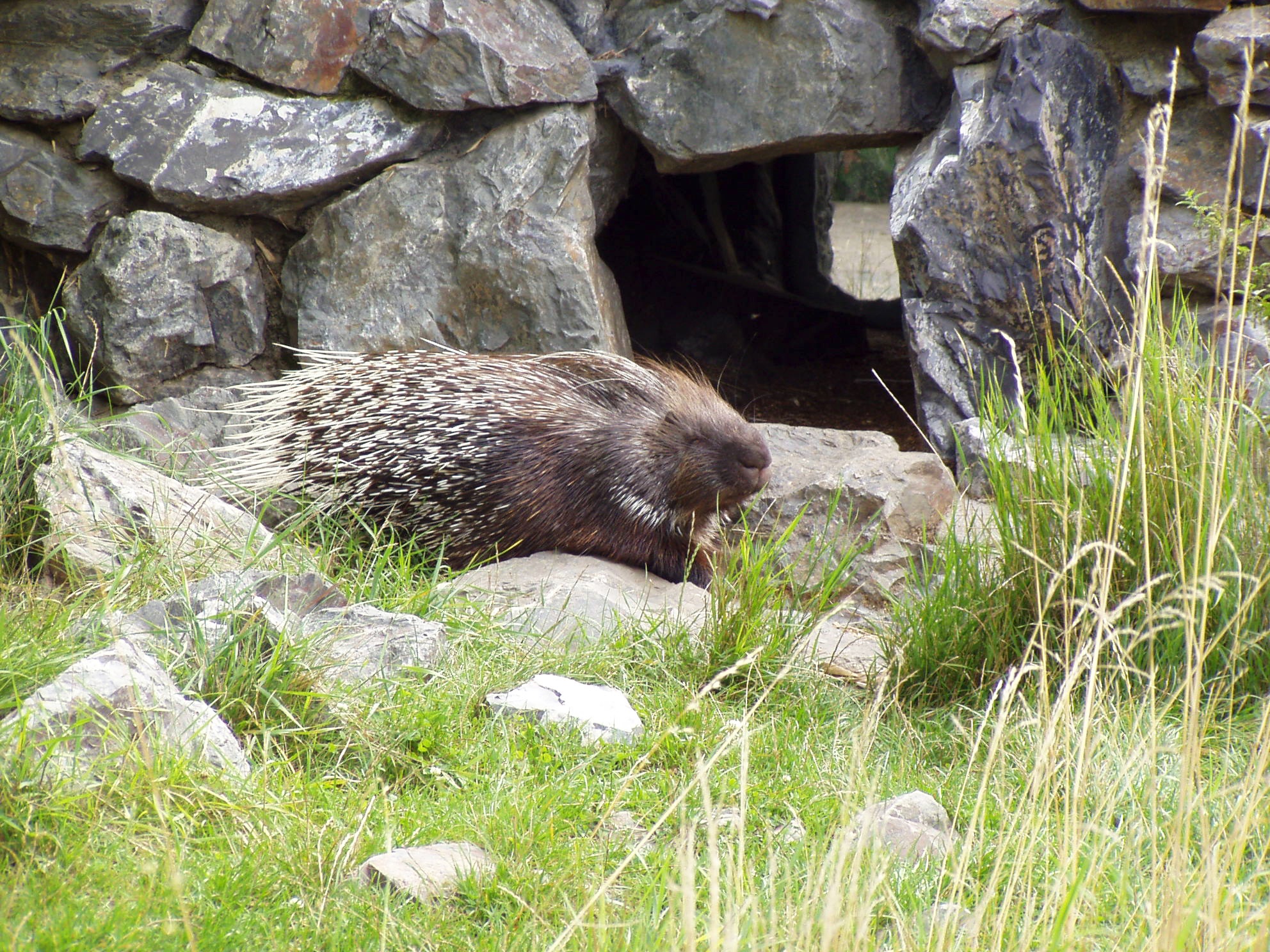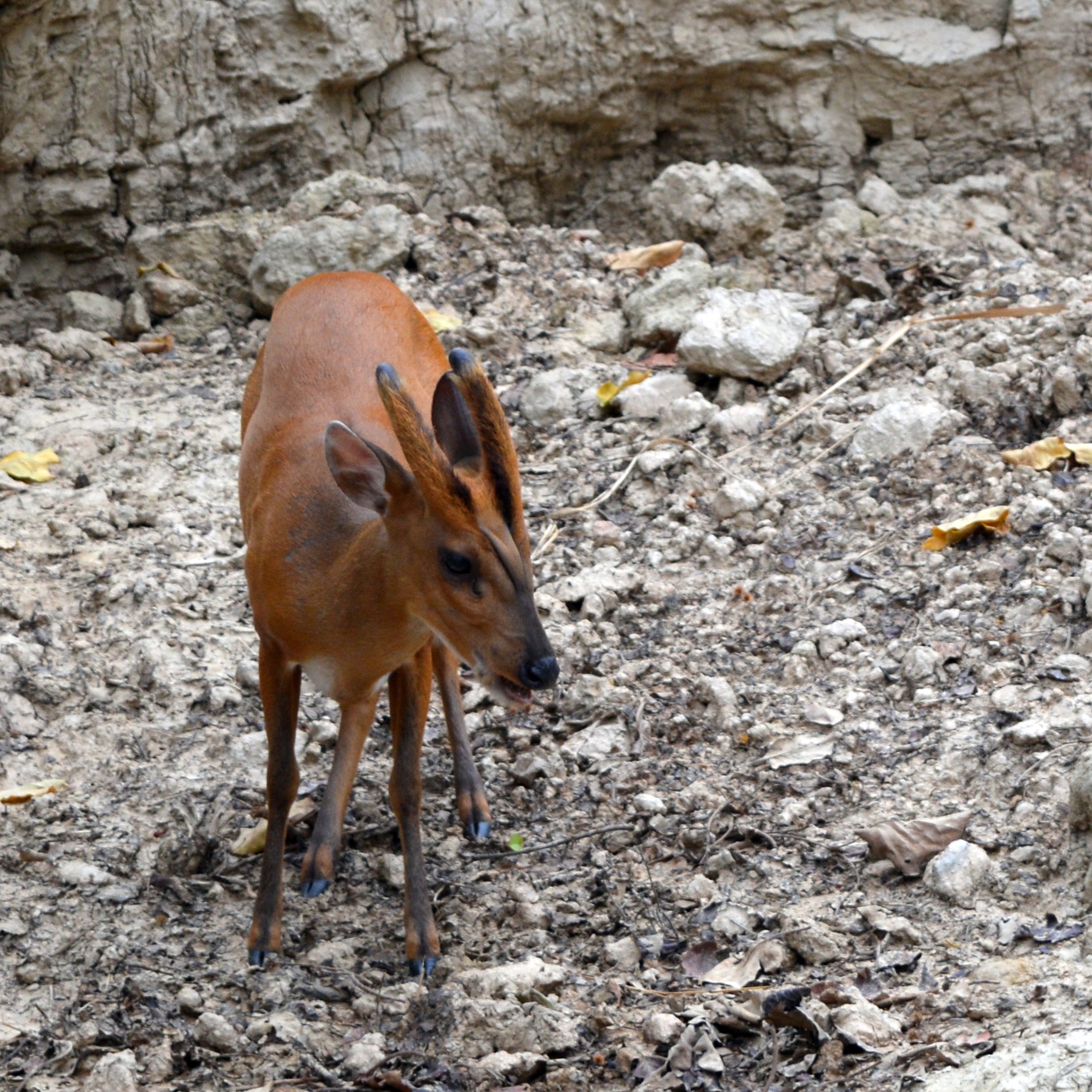|
Melghat
Melghat was among the first nine tiger reserves of India to be notified in 1973 under Project Tiger. It is located in the northern part of Amravati District of Maharashtra. Melghat Wildlife Sanctuary was declared as in 1985. The total area of the reserve is 2,768 square kilometres. Geography The Melghat area was declared a tiger reserve in 1974. Meghat Tiger Reserve is administratively divided into Sipna, Gugamal and Akot Wildlife Division. The total area of the reserve is around . At the northern extreme of the Amravati district of Maharashtra, on the border of Madhya Pradesh, lies the Melghat in the South-western Satpura mountain ranges. Melghat means 'meeting of the ghats', which describes the area as a large tract of unending hills and ravines scarred by jagged cliffs and steep climbs. The Tapti River flows through the northern part of Melghat Tiger Reserve and forms the boundary of the reserve together with the Gawilghur ridge of the Satpura Range. The forest is trop ... [...More Info...] [...Related Items...] OR: [Wikipedia] [Google] [Baidu] [Amazon] |
Amravati District
Amravati district (Marathi pronunciation: Help:IPA/Marathi, [əmɾaːʋət̪iː]) is a Districts of Maharashtra, district of Maharashtra state in central India. It is the administrative headquarter of Amravati division, which is one of the two divisions in Vidarbha (other being Nagpur), out of total 6 Regions and Divisions of Maharashtra, regions in state of Maharashtra. The district is situated between 20°32' and 21°46' north latitudes and 76°37' and 78°27' east longitudes. The district occupies an area of 12,235 km2. The district has boundaries with Betul District of Madhya Pradesh state to the north, and with the Maharashtra districts of Nagpur District, Nagpur to the northeast, Chhindwara district of Madhya Pradesh to the northeast Wardha District, Wardha to the east, Yavatmal District, Yavatmal to the south, Washim District, Washim to the southwest, and Akola District, Akola and Buldhana District, Buldhana districts to the west. History In 1853, the present terri ... [...More Info...] [...Related Items...] OR: [Wikipedia] [Google] [Baidu] [Amazon] |
Satpura Range
The Satpura Range, formerly also known as the Seeonee Hills, is a range of hills in central India. The range rises in eastern Gujarat running east through the border of Maharashtra and Madhya Pradesh and ends in Chhattisgarh. The range parallels the Vindhya Range to the north, and these two east–west ranges divide Indian Subcontinent into the Indo-Gangetic plain of northern India and the Deccan Plateau of the south. The Narmada River originates from north-eastern end of Satpura in Amarkantak, and runs in the depression between the Satpura and Vindhya ranges, draining the northern slope of the Satpura range, running west towards the Arabian Sea. The Tapti River originates in the eastern-central part of Satpura, crossing the range in the center and running west at the range's southern slopes before meeting the Arabian Sea at Surat, draining the central and southern slopes of the range. Multai, the place of Tapti river origin is located about 465 kilometer far, south-westerl ... [...More Info...] [...Related Items...] OR: [Wikipedia] [Google] [Baidu] [Amazon] |
Bengal Tiger
The Bengal tiger is a population of the ''Panthera tigris tigris'' subspecies and the nominate tiger subspecies. It ranks among the largest wild cats alive today. It is estimated to have been present in the Indian subcontinent since the Late Pleistocene for about 12,000 to 16,500 years. Its historical range covered the Indus River valley until the early 19th century, almost all of India, southern Nepal, Bangladesh, Bhutan and southwestern China. Today, it inhabits India, Bangladesh, Nepal, Bhutan, and southwestern China. It is threatened by poaching, habitat loss and habitat fragmentation. As of 2022, the Bengal tiger population was estimated at 3,167–3,682 individuals in India, 316–355 individuals in Nepal, 131 individuals in Bhutan and around 114 individuals in Bangladesh. Taxonomy ''Felis tigris'' was the scientific name used by Carl Linnaeus in 1758 for the tiger. It was subordinated to the genus ''Panthera'' by Reginald Innes Pocock in 1929. Bengal is the traditional ... [...More Info...] [...Related Items...] OR: [Wikipedia] [Google] [Baidu] [Amazon] |
Maharashtra
Maharashtra () is a state in the western peninsular region of India occupying a substantial portion of the Deccan Plateau. It is bordered by the Arabian Sea to the west, the Indian states of Karnataka and Goa to the south, Telangana to the southeast and Chhattisgarh to the east, Gujarat and Madhya Pradesh to the north, and the Indian union territory of Dadra and Nagar Haveli and Daman and Diu to the northwest. Maharashtra is the second-most populous state in India, the third most populous country subdivision in South Asia and the fourth-most populous in the world. The state is divided into 6 divisions and 36 districts. Mumbai is the capital of Maharashtra due to its historical significance as a major trading port and its status as India's financial hub, housing key institutions and a diverse economy. Additionally, Mumbai's well-developed infrastructure and cultural diversity make it a suitable administrative center for the state, and the most populous urban are ... [...More Info...] [...Related Items...] OR: [Wikipedia] [Google] [Baidu] [Amazon] |
Tiger Reserves Of India
The tiger reserves in India were set up as a part of Project Tiger initiated in 1973 and are administered by the National Tiger Conservation Authority of Government of India. As of March 2025, there are 58 protected areas that have been designated as tiger reserves. As of 2023, there were 3,682 wild tigers in India, which is almost 75% of the world's wild tiger population. Goal As per the section 38 of the Wild Life (Protection) Act, 1972, the state governments are responsible preparing a Tiger Conservation Plan which includes planning and management of notified areas and maintaining the requisite competent staff to ensure the protection of the tiger reserve and providing inputs for maintaining a viable population of tigers, co-predators and prey animals. Tiger population In 2006, it was estimated that there were 1,411 tigers living in the wild, the lowest ever recorded. The 2010 National Tiger Assessment estimated the total population of wild tigers in India at 1,706. As p ... [...More Info...] [...Related Items...] OR: [Wikipedia] [Google] [Baidu] [Amazon] |
Indian Pangolin
The Indian pangolin (''Manis crassicaudata''), also called thick-tailed pangolin and scaly anteater, is a pangolin native to the Indian subcontinent. Like other pangolins, it has large, overlapping Scale (zoology), scales on its body which act as Armour (zoology), armour. The colour of its scales varies depending on the colour of the earth in its surroundings. It can also curl itself into a ball as self-defence against predators such as the tiger. It is an insectivore feeding on ants and termites, digging them out of mounds and logs using its long claws, which are as long as its fore limbs. It is nocturnal and rests in deep burrows during the day. It is not common anywhere in its range, and is threatened by hunting for its meat and various body parts used in traditional medicine. Characteristics The Indian pangolin is a solitary, shy, slow-moving, nocturnal mammal. It is about long from head to tail, the tail usually being long, and weighs . Females are generally smaller th ... [...More Info...] [...Related Items...] OR: [Wikipedia] [Google] [Baidu] [Amazon] |
Indian Porcupine
The Indian crested porcupine (''Hystrix indica'') is a hystricomorph rodent species native to southern Asia and the Middle East. It is listed as Least Concern on the IUCN Red List. It belongs to the Old World porcupine family, Hystricidae. Description The Indian crested porcupine is a large rodent, weighing . The body (from nose to base of the tail) measures between with the tail adding an additional . The lifespan of Indian crested porcupines in the wild is unknown, however, the oldest known Indian crested porcupine in captivity was female; and lived up to be 27.1 years old. It is covered in multiple layers of modified hair called quills, with longer, thinner quills covering a layer of shorter, thicker ones. The quills are brown or black with alternating white and black bands. They are made of keratin and are relatively flexible. Each quill is connected to a muscle at its base, allowing the porcupine to raise its quills when it feels threatened. The longest quills are loca ... [...More Info...] [...Related Items...] OR: [Wikipedia] [Google] [Baidu] [Amazon] |
Rhesus Monkey
The rhesus macaque (''Macaca mulatta''), colloquially rhesus monkey, is a species of Old World monkey. There are between six and nine recognised subspecies split between two groups, the Chinese-derived and the Indian-derived. Generally brown or grey in colour, it is in length with a tail and weighs . It is native to South Asia, South, Central Asia, Central, and Southeast Asia and has the widest geographic range of all non-human primates, occupying a great diversity of altitudes and habitats. The rhesus macaque is diurnality, diurnal, arboreal, and terrestrial. It is mostly herbivorous, feeding mainly on fruit, but also eating seeds, roots, buds, Bark (botany), bark, and cereals. Rhesus macaques living in cities also eat human food and trash. They are gregarious, with troops comprising 20–200 individuals. The social groups are matrilineal. Individuals communicate with a variety of facial expressions, vocalisations, body postures, and gestures. As a result of the rhesus macaq ... [...More Info...] [...Related Items...] OR: [Wikipedia] [Google] [Baidu] [Amazon] |
Langur
The Colobinae or leaf-eating monkeys are a subfamily of the Old World monkey family that includes 61 species in 11 genera, including the black-and-white colobus, the large-nosed proboscis monkey, and the gray langurs. Some classifications split the colobine monkeys into two tribes, while others split them into three groups. Both classifications put the three African genera '' Colobus'', '' Piliocolobus'', and '' Procolobus'' in one group; these genera are distinct in that they have stub thumbs (Greek κολοβός ''kolobós'' = "docked"). The various Asian genera are placed into another one or two groups. Analysis of mtDNA confirms the Asian species form two distinct groups, one of langurs and the other of the "odd-nosed" species, but are inconsistent as to the relationships of the gray langurs; some studies suggest that the gray langurs are not closely related to either of these groups, while others place them firmly within the langur group. Characteristics Colobines are ... [...More Info...] [...Related Items...] OR: [Wikipedia] [Google] [Baidu] [Amazon] |
Barking Deer
Muntjacs ( ), also known as the barking deer or rib-faced deer, (URL is Google Books) are small deer of the genus ''Muntiacus'' native to South Asia and Southeast Asia. Muntjacs are thought to have begun appearing 15–35 million years ago, with remains found in Miocene deposits in France, Germany and Poland. Most are listed as least-concern species or Data Deficient by the International Union for Conservation of Nature (IUCN), although others such as the black muntjac, Bornean yellow muntjac, and giant muntjac are vulnerable, near threatened, and critically endangered, respectively. Name The present name is a borrowing of the Latinized form of the Dutch , which was borrowed from the Sundanese ''mencek'' (). The Latin form first appeared as in Zimmerman in 1780. An erroneous alternative name of ''Mastreani deer'' has its origins in a mischievous Wikipedia entry from 2011 and is incorrect. Distribution The present-day species are native to Asia and can be found in Pak ... [...More Info...] [...Related Items...] OR: [Wikipedia] [Google] [Baidu] [Amazon] |
Mouse Deer
Chevrotains, or mouse-deer, are small, even-toed ungulates that make up the family Tragulidae, and are the only living members of the infraorder Tragulina. The 10 extant species are placed in three genera, but several species also are known only from fossils. The extant species are found in forests in South and Southeast Asia; a single species, the water chevrotain, is found in the rainforests of Central and West Africa. In November 2019, conservation scientists announced that they had photographed silver-backed chevrotains (''Tragulus versicolor'') in a Vietnamese forest for the first time since the last confirmed sightings in 1990. They are solitary, or live in loose groupings or pairs, and feed almost exclusively on plant material. Chevrotains are the smallest hoofed mammals in the world. The Asian species weigh between , while the African chevrotain is considerably larger, at . With an average length of and an average height of , the Java mouse-deer is the sma ... [...More Info...] [...Related Items...] OR: [Wikipedia] [Google] [Baidu] [Amazon] |
Flying Squirrel
Flying squirrels (scientifically known as Pteromyini or Petauristini) are a tribe (biology), tribe of 50 species of squirrels in the family (biology), family Squirrel, Sciuridae. Despite their name, they are not in fact capable of full flight in the same way as birds or bats, but they are able to gliding flight, glide from one tree to another with the aid of a patagium, a furred skin membrane that stretches from wrist to ankle. Their long tails also provide stability as they glide. Anatomically they are very similar to other squirrels with a number of adaptations to suit their lifestyle; their limb bones are longer and their hand bones, foot bones, and distal vertebrae are shorter. Flying squirrels are able to steer and exert control over their glide path with their limbs and tail. Molecular studies have shown that flying squirrels are Monophyly, monophyletic (having a common ancestor with no non-flying descendants) and originated some 18–20 million years ago. The genus ''Par ... [...More Info...] [...Related Items...] OR: [Wikipedia] [Google] [Baidu] [Amazon] |





